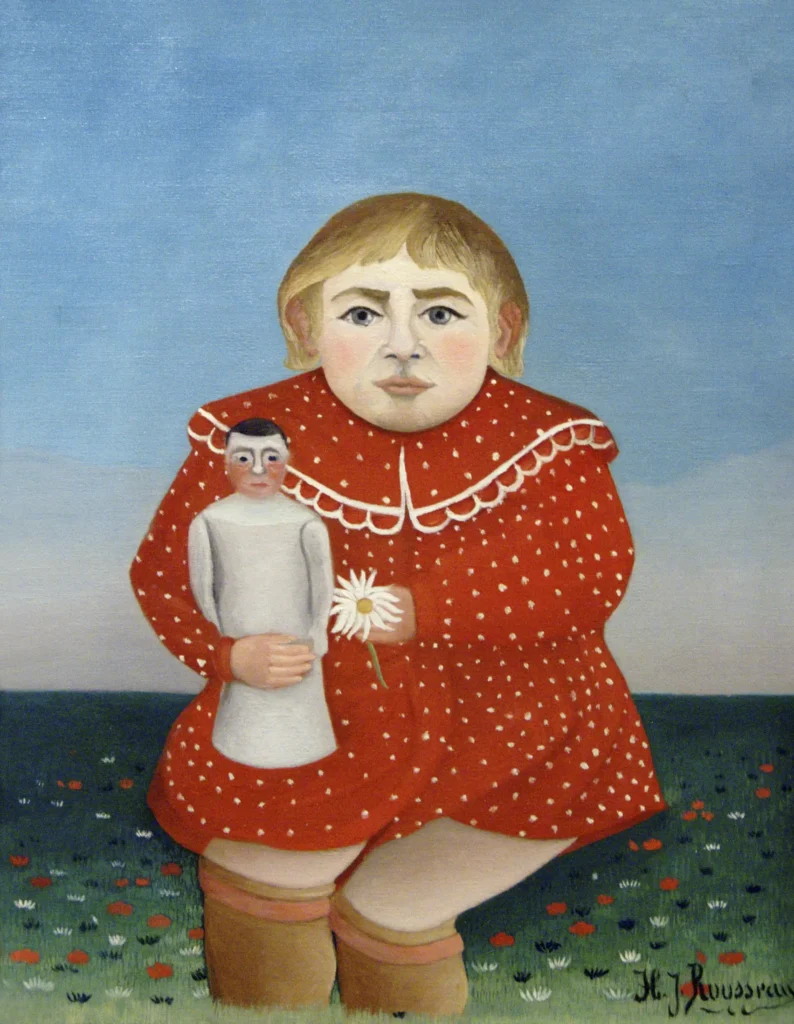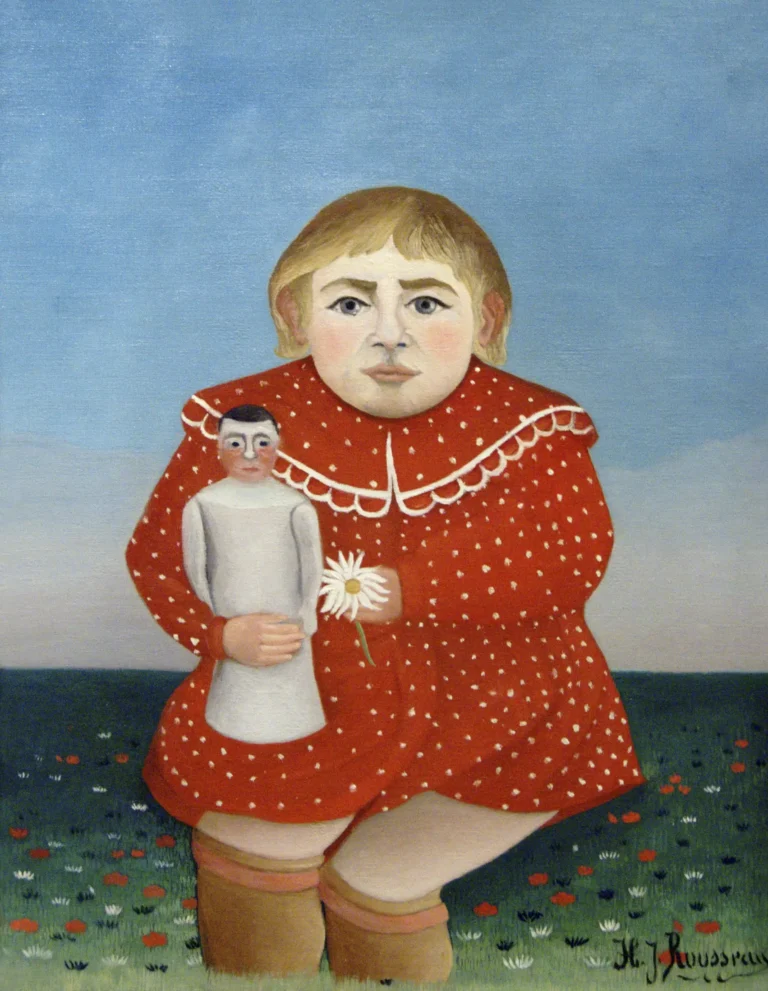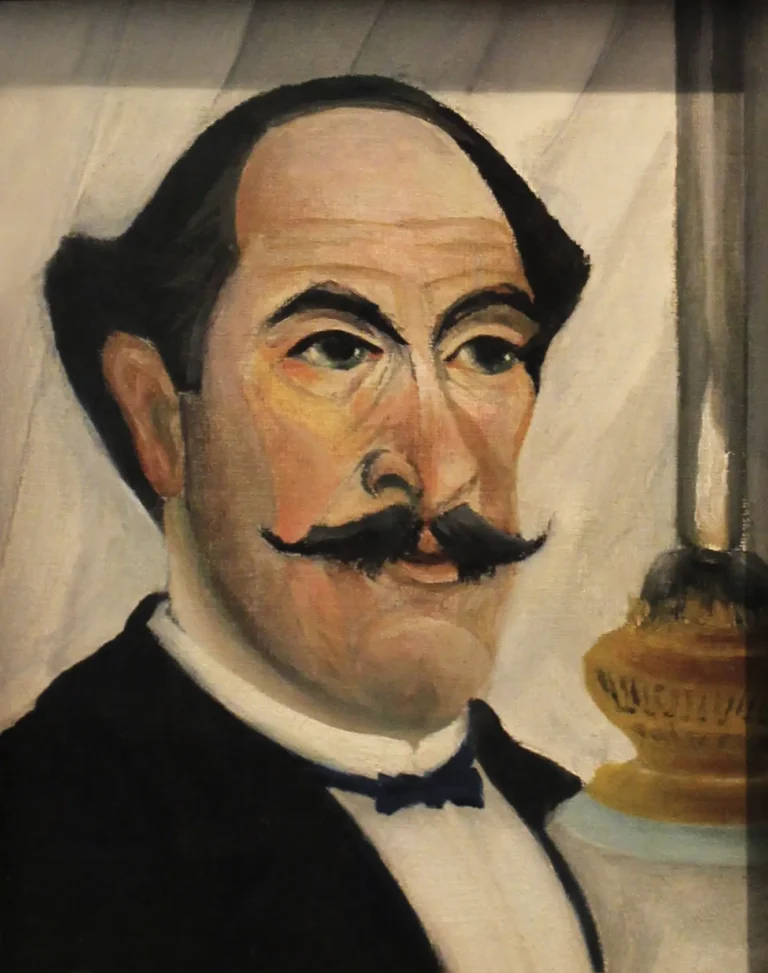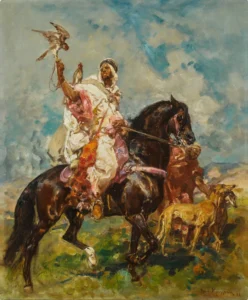Child with Doll (1906)
Child with Doll is a poignant painting by Henri Rousseau, completed in 1906. This enchanting artwork portrays a young child tenderly grasping a doll, capturing the essence of childhood innocence through Rousseau's simple yet evocative style. With vibrant colors and a direct narrative approach, the work stands as a testament to Rousseau's prowess in naive painting, a genre that eschews conventional techniques for a more raw and emotive expression.
Year 1906
About the Artwork
Henri Rousseau, often celebrated for his self-taught prowess, created Child with Doll amidst his exploration of naive art during the early 20th century. Rousseau’s fascination with childhood and innocence is beautifully manifested in this work, as the child’s embrace of the doll reflects not only the purity of youth but also Rousseau's own nostalgic tendencies. Despite the societal norms of the time that favored more academic styles, Rousseau's work received mixed reviews, yet his distinct approach paved the way for future modernist artists who sought to deconstruct traditional forms. The painting showcases his iconic use of bold colors, simple shapes, and tender emotional undertones, making it a significant piece both artistically and culturally.
Did You Know
Liked what you see? Add it to your collection.
Enjoyed reading? Share it.
... continued
Artist and Creation
The painting was created by Henri Rousseau, a self-taught artist known for his naive and post-Impressionist style.
Subject Matter
The painting depicts a child holding a doll, showcasing Rousseau's characteristic simple and direct style.










